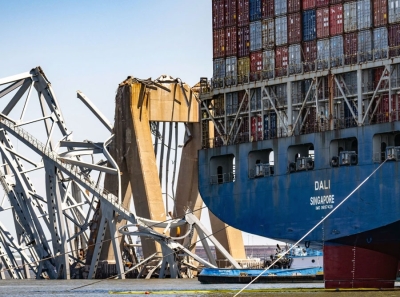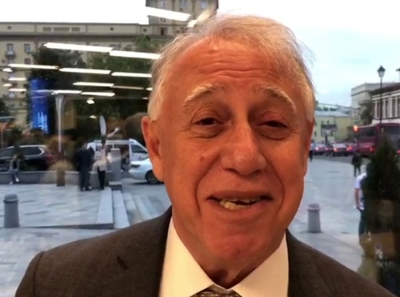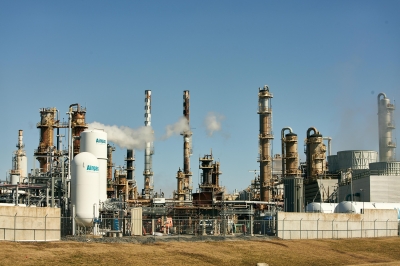Series: America’s Dairyland: Risking Workers’ Lives for the Milk We Drink
Dairy farms are some of the most dangerous job sites in America. Much of the labor is done by immigrants working on small farms that operate with little safety oversight.
Leer en español.
On a below-freezing morning in March 2013, Israel Lepe Quezada was crushed to death while working on a dairy farm in northeast Wisconsin. The farm’s owner had found Lepe pinned between the engine compartment and hydraulic arms of a forklift-like machine.
Almost six years later, Blas Espinoza Cuahutzihua was killed when the arms of a skid-steer loader, another kind of farming vehicle, fell on him at the dairy farm where he worked near the Minnesota border. His last words, according to court documents, were to say goodbye to his family.
And one night in March of this year, Florencio Gómez Rodríguez drowned after he drove a skid steer into a 14-foot-deep pond filled with cow manure on a dairy farm where he worked.
When the daughter of the farm owner called 911, she told the dispatcher it was unlikely Gómez had survived. “Usually when you go down, you don’t normally come back up,” she said. “It’s thick.”
An autopsy found traces of manure in Gómez’s airway.
In all three cases, inspectors from the Occupational Safety and Health Administration, the federal agency responsible for workplace safety, went to the farms. And in all three cases, they left within an hour — without conducting investigations into the deaths.
The inspectors concluded they couldn’t investigate because OSHA is banned from enforcing safety laws on farms with fewer than 11 workers unless they have employer-provided housing known as a “temporary labor camp.”
Since 2009, at least 17 workers, most of them immigrants, have died on Wisconsin dairy farms. Twelve of the deaths happened on farms with fewer than 11 workers. OSHA did not inspect eight of those 12, each time citing the small farms exemption.
Records reviewed by ProPublica and interviews show that the agency may have more power to open an investigation into these farms than even its own leaders seem to be aware of.
When Lepe, Espinoza and Gómez died, it’s unclear whether OSHA inspectors tried to determine if the farmers who employed them provided housing for their workers before deciding there wasn’t a temporary labor camp and leaving. Had the inspectors taken a slightly closer look, they might have learned that the farmers had readily talked with law enforcement officials about providing housing for their immigrant workers.
And if the inspectors had read OSHA’s own files, they would have known that the agency has repeatedly, though inconsistently, inspected small farms after concluding a housing arrangement was a temporary labor camp.
How OSHA interprets and applies its definition of a temporary labor camp — and whether it should consider dairy workers temporary when farms produce milk year-round — has significant implications for the safety of thousands of workers in one of America’s most dangerous industries.
It is the difference between workers’ deaths, injuries or safety complaints being investigated or ignored. Without OSHA inspections, no one ever determined whether the deaths of Lepe, Espinoza or Gómez could have been prevented.
“Nothing was investigated at all,” said Lepe’s sister, Enedina Lepe Quezada. “He died. His body was sent home. We buried him. And then there was silence.”
The three men — all undocumented immigrants from Mexico — died from well-known hazards in agriculture. In two of the deaths, workers were performing dangerous tasks that OSHA includes on its “Dairy Dozen,” a list that is supposed to help inspectors and farmers ensure that farms are safe workplaces.
“We need to do everything to prevent worker deaths,” said Amy Liebman, a chief program officer with the nonprofit Migrant Clinicians Network who focuses on worker health and safety. “Whether they are on a smaller farm or a bigger farm, the idea behind OSHA going out is to understand what happened and stop it from happening again.”
ProPublica asked OSHA to explain why the agency didn’t open an inspection after the most recent death, that of Gómez in the manure lagoon. Reporters also asked OSHA to clarify whether it continues to view employer-provided housing for immigrant workers as a basis for opening inspections on small farms.
OSHA officials declined interview requests but responded to some written questions. The agency first said that Gómez lived “in a different town and paid for his own housing” and that the farm he worked for did not provide housing for its workers. Reporters told the agency that interviews and law enforcement records showed that Gómez and other workers lived in a house down the road provided by the farm owner and that another worker lived in a trailer on the farm. In response, OSHA officials said that an inspector hadn’t found evidence of a temporary labor camp.
What OSHA calls a temporary labor camp has varied from case to case. The agency has said it wouldn’t consider employer-provided housing a temporary labor camp if the workers’ jobs were permanent. Yet OSHA case records from 2009 to as recently as spring 2022 show that the agency has repeatedly described immigrant or Hispanic dairy workers who lived in employer-provided housing as temporary workers.
ProPublica identified five cases — four deaths and one complaint — on small Wisconsin farms where OSHA said housing for immigrant workers constituted a temporary labor camp, giving it jurisdiction to open investigations.
Former OSHA officials said the agency’s scattered approach might be a byproduct of disorganization or shifting priorities in a large bureaucracy that’s responsible for inspecting hundreds of deaths in all kinds of workplaces each year. Jordan Barab, a former deputy assistant secretary at OSHA during the Obama administration, said he was “mystified” that the agency would inspect some small farms that housed immigrant workers but not others. “It is essential for OSHA to have a consistent and consistently applied policy especially when it comes to controversial issues like this,” he said.
This uncertainty creates challenges for dairy farm owners and their workers. Farmers are often unaware that OSHA can set foot on their farms, much less conduct multiday investigations of deaths or injuries. Lawyers and advocates for dairy workers say they don’t even bother calling OSHA when workers are killed or injured on smaller farms because they’re so used to the agency citing the small farms exemption.
Lola Loustaunau, an assistant professor at the University of Wisconsin-Madison School for Workers, said that “it would really open the door for a lot of protections for workers” if OSHA consistently inspected small dairy farms that provide housing to immigrant workers.
“If they are politically interested in doing something,” she added, “it looks like they have all the basis to do it.”
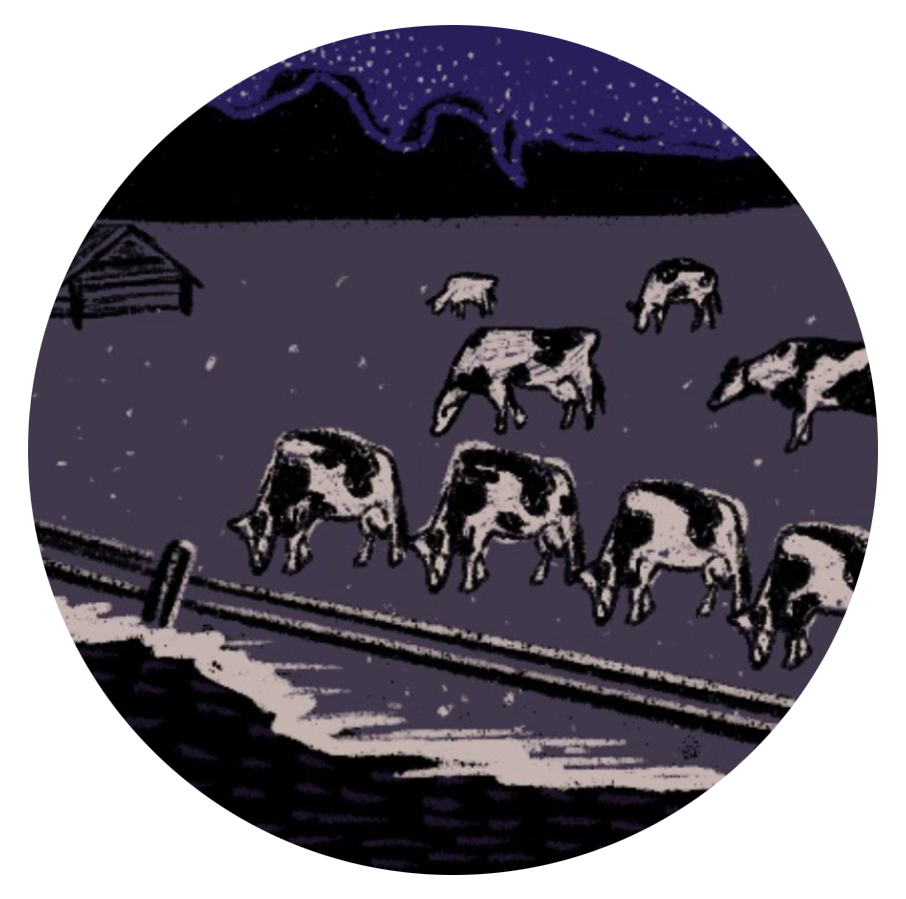
The small farms exemption — a limitation Congress has written into OSHA’s budget each year since 1976 — was intended to protect small family farms from government overreach. It’s so ingrained in American agriculture that many dairy farmers assume that OSHA won’t even try to go onto their property.
So when OSHA officials were notified in October 2009 that a worker had drowned in a manure lagoon on a dairy farm in western Wisconsin, they first had to determine whether the small farms exemption would apply.
OSHA inspectors quickly learned that Val-O-Mo Farm, the dairy farm where José Candelario Zacarías Rayón died, had just five workers apart from the farmer’s family members. Zacarías and three other immigrant workers lived in a trailer on the property. In their report, the inspectors dedicated more than a full page to explaining why that trailer counted as a temporary labor camp that would put the farm under the agency’s jurisdiction.
Though dairy work is year-round, Zacarías and the other workers’ status as immigrants made the employer-employee relationship a temporary one, the inspectors wrote. There is “no defined milking season,” they wrote, but workers are hired “with the understanding that they were offered employment” for the “duration of their own choosing and that they were able to come and go from the farm to return to Mexico to visit their families.”
OSHA inspectors wrote that the on-site housing helped ensure the farm always had workers on hand. The workers didn’t own cars and relied on family and friends to help them get food and other essentials. (Wisconsin bans undocumented immigrants from getting driver’s licenses, as ProPublica has previously reported.) There weren’t any nearby alternatives for housing, and workers weren’t charged rent, creating incentives to live on the farm. Inspectors also found that “Hispanic employees were provided little time to rest in between shifts and therefore living offsite, although technically allowed, was impractical to the Hispanic workforce.”
The housing arrangement at Val-O-Mo remains standard at dairy farms of all sizes in Wisconsin and other parts of the country. Nationally in 2019 about three-quarters of dairy farms provided housing or a housing allowance to their workers, according to a survey commissioned by a dairy industry association.
OSHA’s investigation found that a guardrail at the push-off platform to the approximately 7-foot-deep manure lagoon had fallen off or been removed several years earlier and had never been replaced.
The farm owners told OSHA they had often warned employees to be careful near the edge of the lagoon’s platform. According to OSHA’s inspection report, Steven Weinzirl, one of the owners, “stated that although he was not denying he personally was at fault,” he believed Zacarías knew what he was doing “since he had been performing the task for nearly two years.”
Weinzirl installed a new guardrail on the manure lagoon after Zacarías’ death, records show.
OSHA also found that Zacarías had worked about 40 hours in the three days leading up to his death, and that he “was in a state of fatigue.” What’s more, inspectors noted, it “was not uncommon for the Hispanic farmhands to perform off the clock work beyond the normal set schedule.”
Workers had also complained about the long hours to the local sheriff’s department when it investigated Zacarías’ death. (The drowning was ruled an accident.) One worker said Zacarías sometimes slept in the cattle stalls in the barn, “saving him the time from walking from the cattle barns back to the trailer house to be able to go to bed so he would be able to get more sleep,” according to the Dunn County sheriff’s report.
One of Zacarías’ nephews, who worked on a nearby dairy farm at the time, said he rarely saw his uncle because they both worked so much. “You work and you sleep,” he said in an interview.
OSHA issued citations to Val-O-Mo for nine safety violations. The agency has few rules that pertain specifically to agriculture, and none about manure lagoons. But OSHA used its catchall “general duty clause” to cite the farm for failing to protect its employees from a recognized danger likely to cause death or serious harm.
Months after OSHA opened its inspection, Weinzirl questioned why the agency considered the trailer a ”temporary labor camp,” records show. But he agreed to correct the safety violations on the farm and paid $4,320 in fines. He declined to comment for this story.
Zacarías was 31 when he died. He left behind a wife in Mexico, according to relatives.
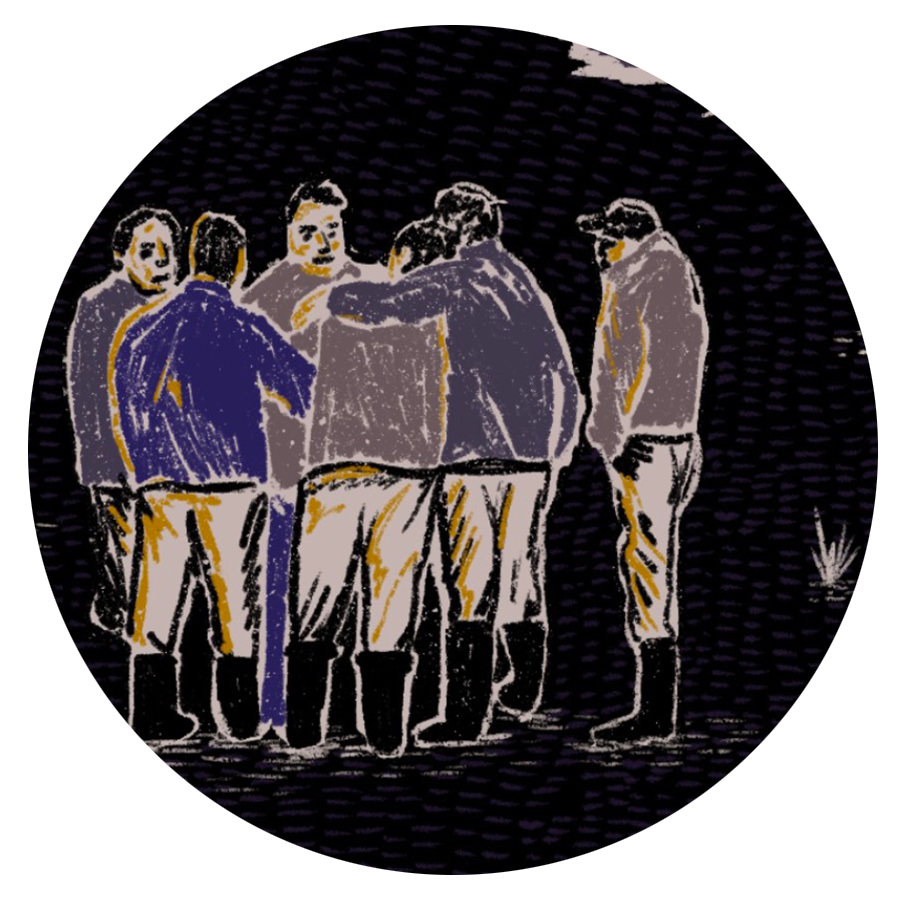
People who study agricultural safety say OSHA inspections are important because they prompt farms to become safer for workers, farmers and their families. Inspectors interview workers about hazards and safety measures, such as whether they received training to operate machinery in a language they understand or if they were taught how to deal with dangerous chemicals. The inspections also show workers that there’s a government agency they can call with confidential safety complaints, though many are unlikely to do so for fear of getting fired or deported. There can also be ripple effects, as other farmers might take corrective actions on their own farms.
After Zacarías’ death at Val-O-Mo, OSHA began to pay more attention to Wisconsin’s dairy industry, which had undergone a dramatic transformation from mostly small, family-run farms to larger operations that required hired labor. Many of those workers were undocumented immigrants.
The agency launched a program dedicated to improving safety on dairy farms across the state. And OSHA continued to use the temporary labor camp provision, even if inconsistently, to investigate deaths from known hazards on small farms. In one case, a 17-year-old boy from Mexico was crushed to death while herding cows into an indoor corral on just his 10th day of work.
Dexter Covey, a former OSHA inspector who conducted some of those investigations, said he understood that many dairy workers were immigrants who traveled back and forth from Wisconsin to visit their families in Mexico. He said inspectors used a clear set of criteria to determine whether housing provided to immigrant workers would allow OSHA to open an inspection. They also interviewed farmers and workers about the housing.
“I don’t think they were trying to hide anything,” Covey told ProPublica.
But the work Covey and his colleagues did to investigate deaths on small farms with housing doesn’t appear to have been well-known to top OSHA officials, both in the Midwest and nationally.
John Newquist, a former assistant administrator for the Midwest region, said he wasn’t aware of those investigations until ProPublica shared a copy of one of the reports with him. Had he known about the investigations, Newquist said, he would have encouraged inspectors to look for worker housing so they could investigate deaths on small farms. He said the small farms exemption was a source of frustration for OSHA inspectors “because you get out there and you can’t do anything because it’s a family farm.”
Years after Newquist retired, one family challenged OSHA’s right to inspect their farm, and the dispute made it to top agency officials in the Midwest. Those officials were resolute about OSHA’s jurisdiction.
In 2017, OSHA received a complaint about an employee who had been injured by a cow on a small farm in northwest Wisconsin. When OSHA inspectors arrived, and in the months that followed, the Byl family said they thought their farm was exempt from inspections because it only had five workers, records show. They questioned whether the trailer they provided should be considered a temporary labor camp when workers weren’t required to live there. Plus, they said their employees weren’t temporary.
“My farm is a family affair and we are taking this to heart,” the Byls wrote to OSHA. “We had no idea we qualified under OSHA standards and we are working diligently to comply.”
The Byls asked the Wisconsin Farm Bureau Federation and their congressional representative, Sean Duffy, to help them verify whether OSHA had jurisdiction over their farm. Both Duffy and the Farm Bureau wrote to OSHA on the Byls’ behalf. A Farm Bureau official even attended a meeting with OSHA and questioned its jurisdiction.
During that meeting, OSHA’s Eau Claire area director acknowledged the “grey or borderline issue surrounding the temporary labor camp definition” but maintained the agency had jurisdiction, records show. OSHA never determined whether a worker was actually injured and, in fact, identified a number of safety features on the farm, including 2-foot-high concrete barriers around the manure lagoon. Still, OSHA fined the farm $650 for its failure to provide workers with safety training or manuals for handling chemicals used on the job.
The Byls declined to comment. Duffy, a Republican who is no longer in office, did not respond to an interview request. A spokesperson for the Wisconsin Farm Bureau Federation referred reporters to OSHA.
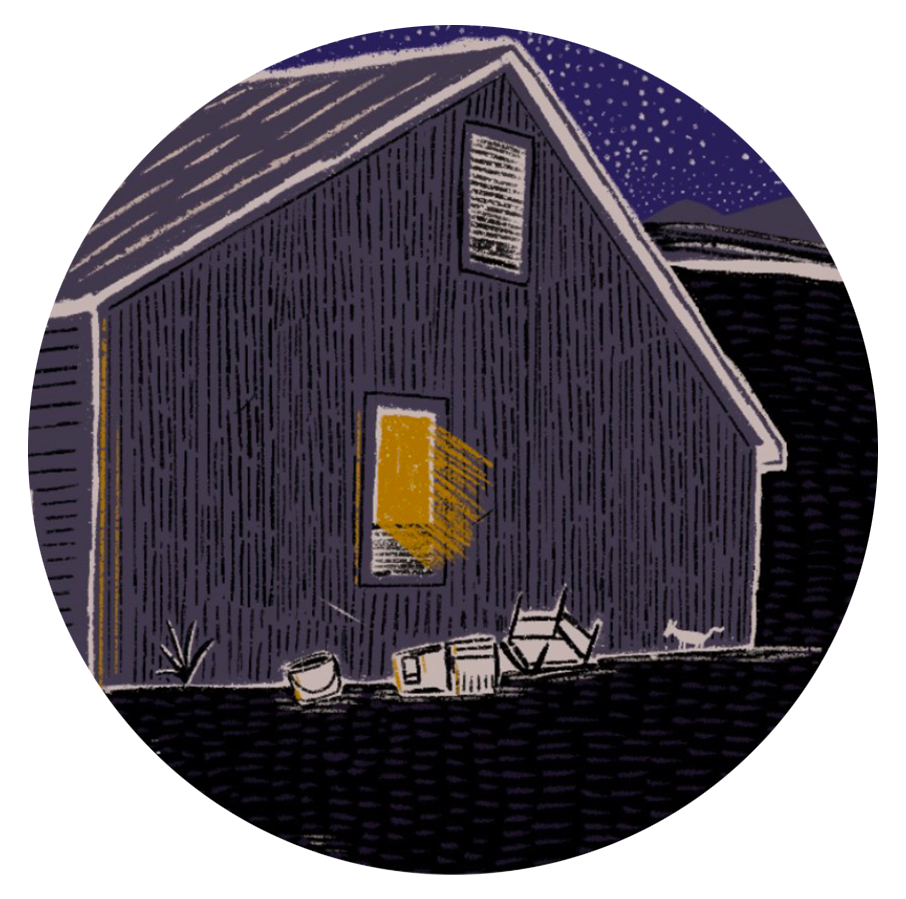
Even as OSHA investigated some deaths on small farms in Wisconsin that provided housing to immigrant workers, the agency didn’t investigate other farms with the same sort of housing. In some of these cases, records show, the farmers had spoken openly to law enforcement and medical examiner officials about the housing they provided their workers.
That’s what happened when Lepe died on a farm just outside of Green Bay on March 3, 2013. Records show the owner of the farm told Brown County sheriff’s deputies that Lepe lived in a bunk room above the milk house. A medical examiner’s report notes that Lepe lived on the farm, Ranovael Dairy. OSHA records are limited due to the age of the case, so it’s unclear whether the inspector who went to the farm the following day ever learned this information.
Lepe began his shift at Ranovael Dairy around 6 a.m. on the day he died. The temperature was in the single digits, and he wore pants and a thermal undershirt under his camouflage insulated coveralls and boots.
Less than two hours later, Ray Vanden Elzen, the farm owner, found Lepe crushed by a telehandler, a rough terrain forklift that can be used to move or lift heavy materials and is known to pose significant safety risks. Lepe had gotten pinned between the machine’s engine compartment and its hydraulic arm, according to the sheriff’s report.
“The loader malfunctioned and the hydraulics released, causing the weight of the loaded scoop to fall to the ground,” a sheriff’s sergeant wrote. “This caused the cross arms to crush the mid section of the deceased victim’s body.”
Vanden Elzen could not be reached for comment.
Lepe had worked at Ranovael for about eight years and did “everything” on the farm, Vanden Elzen told Brown County medical examiners. He also told sheriff’s deputies that he knew that Lepe was undocumented and had used an alias “to avoid deportation for several years,” records show.
Lepe had grown up working with cattle on a small farm in the Mexican state of Jalisco, and he enjoyed his job in Wisconsin, his sister told ProPublica.
But it was dangerous. A few weeks before he died, Lepe told his sister that he had lost the tips of two fingers in a farm accident.
Lepe was 29 and a widower. He left behind a young daughter.
Almost six years later, another worker was crushed by similar machinery on a farm on the other side of the state.
Crawford County sheriff’s deputies investigating the Jan. 12, 2019, death of Espinoza on a farm in Steuben, in western Wisconsin, noted that he lived on-site. The farm owner, Eugene Fritsche, even told deputies that Espinoza and another worker left the farm “only one time a week to go shopping for food,” and that they “always stayed on the farm and sent all of their money back to their family in Mexico,” according to a sheriff’s report. The county coroner also said that Espinoza lived on the farm.
Despite this, an OSHA inspector who spoke with Fritsche noted that “the farm did not supply housing” for the two workers. It’s unclear how OSHA reached that conclusion.
Espinoza had been standing next to a skid steer, removing manure and mud from the machine, according to a report from the sheriff’s department and an ongoing wrongful death lawsuit filed against the farm by Espinoza’s family.
At some point, Espinoza became pinned between the machine’s cab and hydraulic arms, which crushed his thighs and abdomen. A co-worker in the milk house heard him scream and ran over.
Fritsche told deputies that he thought Espinoza had accidentally activated the skid steer’s arms to move them downward. He said the machine had safety mechanisms, “but Blas did not have those engaged to lock the arms in place.”
The lawsuit alleges that Fritsche knew that the skid steer had mechanical problems but failed to provide the “necessary protection, training, or concern for Mr. Espinoza’s safety.”
In court records, the farm and its insurance company have denied the allegations. Their attorney declined to comment. A woman who answered the door at Fritsche’s home also declined to comment, as did a lawyer for Espinoza’s family.
Espinoza was undocumented, according to relatives. A sheriff’s deputy who asked Fritsche about his workers’ immigration status wrote that he simply “took what paperwork he was given” by them and “used that information on their employee paperwork.”
Espinoza was 45. He left behind a wife and two children back in the eastern Mexican state of Veracruz.
Local authorities ruled both deaths as accidents.

Since Espinoza’s death in January 2019, at least seven other workers have died on Wisconsin dairy farms. One was crushed against a wall by a cow. Another was disemboweled by machinery in a grain silo. Another was pinned under a tractor that had tipped over.
In the most recent death, that of Gómez, who drowned in a manure lagoon on March 28, the OSHA inspector asked about Gómez’s housing but failed to find out where he and other workers lived.
An OSHA inspector showed up to the farm in Melrose, in western Wisconsin, the morning after Gómez’s death and spoke to the owner, Donald Antal Jr. The inspector’s interview notes indicate that the Antal Dairy Farm employed six workers and that Antal said Gómez “did not live on our property.”
But Gómez and a few other men who worked on the farm lived together in a house provided by the Antals for their workers about a half-mile down the road from the farm, ProPublica learned through interviews and law enforcement records. Another worker lived with his family in a trailer on the farm. It’s unclear whether the inspector ever learned about any of this housing for workers or took it into account when deciding that the small farms exemption applied.
On the night he died, Gómez was supposed to be operating a skid steer to scrape cow manure off a barn floor and into the nearby manure lagoon. But nobody could find him.
His coworkers looked out to the black surface of the 150-by-50-foot lagoon. Manure lagoons pose well-known drowning risks; due to their steep walls and manure’s slippery texture, they are nearly impossible to get out of.
Through the dim light from the barn, workers could see several inches of white metal sticking out above the manure. It was a part of the skid steer.
Workers alerted Antal, who rushed to the manure lagoon. Antal’s adult daughter called 911: “A worker fell in the shit pit and sunk and they think he’s dead.”
The skid steer was submerged 15 feet from the edge of the manure lagoon. Firefighters used a boat to reach it so they themselves wouldn’t drown and linked a chain to the skid steer. Then Antal hauled it out with a tractor.
A window at the front of the vehicle was shattered, and manure had filled the cabin. Gómez was inside, slumped over in his seat. He died of asphyxiation, according to the medical examiner’s report.
Gómez had a blood alcohol concentration of 0.18%, more than twice the legal limit for driving. Bonnie Kindschy, the Jackson County medical examiner, said she has no way of knowing whether Gómez would have fallen into the manure lagoon if he hadn’t been drinking. His death was ruled an accident.
Kindschy called OSHA because she believed Gómez’s death was clearly work-related and she thought it needed to be investigated. And OSHA does investigate workplace injuries and deaths regardless of whether workers were intoxicated or using drugs.
But OSHA didn’t investigate Gómez’s death. No other agency that responded to the emergency that night asked whether the lagoon had a barrier in place to prevent people and machines from falling in or, if there was a barrier, whether it was strong enough to hold back a 6,700-pound skid steer.

Jackson County Sheriff Duane Waldera said his department had looked into whether a crime was committed, not farm safety. “We didn’t look into barricades and how farms should be,” he said in an interview.
Antal declined to comment.
Gómez was 32. He was also undocumented, a family member told ProPublica, though the Antals found some type of U.S. identification card with Gómez’s name on it in the “farmhand living quarters,” according to the sheriff’s report.
A Veracruz native, Gómez had worked on Wisconsin dairy farms for about half his life and had worked at Antal Dairy for about 30 days before he died. He left behind a wife and a daughter. He had been saving up to bring them to the U.S.

Outside of their immigrant communities, the deaths of Israel Lepe Quezada, Blas Espinoza Cuahutzihua and Florencio Gómez Rodríguez received little attention.
After Gómez died, the owner of a Mexican grocery store and restaurant more than an hour north of Antal Dairy put a small donation box near the register. A photo of a smiling Gómez in a Green Bay Packers winter hat was taped alongside a handwritten note in Spanish. “We are asking for donations for our friend Florencio who suffered an accident at work,” the note read. “The help is for his family.”
In April, a small caravan of immigrant workers traveled across the Minnesota border to the town of Saint Michael to attend a visitation at the funeral home that handled the arrangements to send Gómez’s body home.
Many of the people who were at the farm the night Gómez drowned, including the medical examiner and the local fire chief, said they wonder if his death could have been prevented.
Tim Kunes, the chief of the Melrose Fire Department, said he learned OSHA had decided not to investigate when he returned to the farm a few days later and spoke with the owner of the farm. He said he was surprised to learn OSHA hadn’t opened an investigation.
Kunes runs a small farm himself, though he doesn’t have any employees. But he said most of his neighbors with dairy farms do have workers, and they’re often immigrants. All of the farms, he said, have fewer than 11 employees.
“So their magic number is 11 and above?” he said.
In general, Kunes said, he doesn’t like the idea of more government regulation or fining small farms. But he knows how dangerous farming can be.
“Could it have been stopped with a couple of simple measures?” Kunes asked of Gómez’s death. “Maybe. We’ll never know.”
Recently Kunes noticed something new when he drove past the Antal Dairy Farm: a fence around the manure lagoon.
Help ProPublica Journalists Investigate the Dairy Industry
We need your help to understand the challenges facing dairy farm workers. We especially want to hear from farmers, medical professionals, regulators and anyone else with perspective from inside the community.
Illustrations by Cuauhtémoc Wetzka for ProPublica
Mariam Elba contributed research. Jeff Frankl and Jeff Ernsthausen contributed data reporting.




